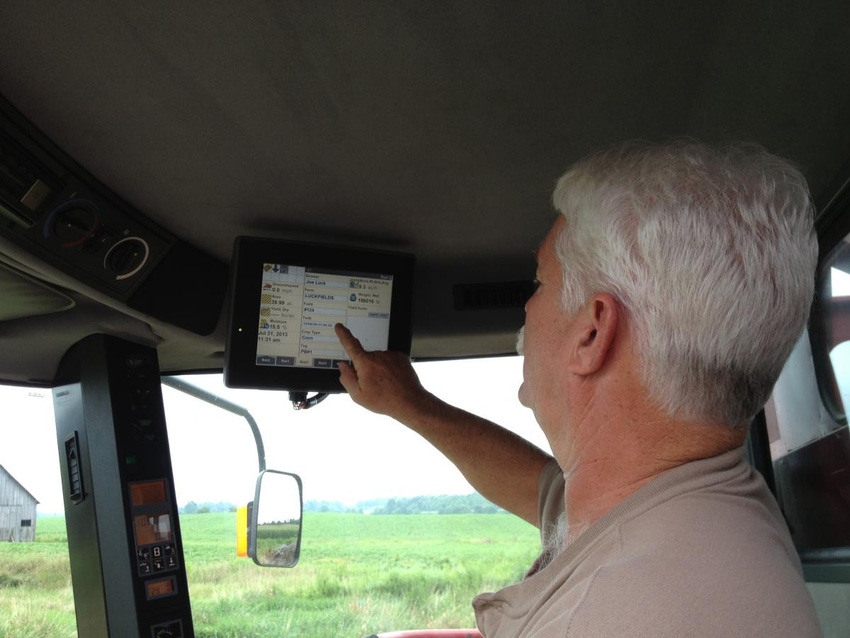October 1, 2018

Source: University of Nebraska-Lincoln
By Joe Luck
Accurate yield monitor data collection is critical, especially when assessing test plots conducted during on-farm research trials or making other management decisions in the future. A critical element of yield monitor operation that should be considered to improve data collection practices is calibration of the mass flow (impact plate) sensor or optical sensor in the clean grain elevator.
Mass Flow Sensor Calibration
The mass flow sensor is the most critical component of the yield monitoring system. The calibration procedure for the mass flow sensor is time-consuming, but absolutely vital for accurate yield measurements. Since mass flow sensor readings may be affected by crop type, moisture content, and test weight, operators should consider performing separate calibrations under these differing circumstances. A separate calibration procedure should always be performed (and stored in the in-cab display) for different crops (such as corn, soybeans, or wheat).
The mass flow sensor calibration process usually involves harvesting two to six small loads of grain (around 3,000 to 5,000 lbs depending on manufacturer specifications) and measuring the scale weight of each load. The reason for this number of loads is to compensate for varying yields expected across a field during harvest. Each load should be harvested such that the flow through the clean grain elevator is as consistent as possible. Remember that the mass flow sensor is measuring grain flow (lbs/sec) through the clean grain elevator; multi-point calibrations (more than two loads) allow the system to provide more accurate estimates over a range, from low to high flow, through the combine. During the yield monitor calibration process, each load weight is entered into the in-cab display automatically or by the operator. The in-cab display then creates an equation to estimate a physical value (in pounds) of grain flow based on mass flow sensor output.
Typically there are two methods for varying the flow rates for proper mass flow sensor calibration:
constant speed with varying cut width or
varying speed with constant cut width. Both options can achieve the same result of varying flow through the clean grain elevator.
Always check throughout the growing season to make sure that debris and material are not building up on or around the mass flow sensor; it should be free to deflect normally during operation.
Newer systems from Deere®, Precision Planting®, and Ag Leader® may allow for automatic calibration load generation, or reduced calibration loads required. Always check manuals for the latest technique.
Optical yield monitor systems are a newer technology that can provide accurate yield data during harvest. These systems are calibrated in much the same way as mass flow sensors. Calibration loads are harvested and weighed and values are entered into the in-cab display for generating yield estimates. One important difference for optical sensors is that grain test weight must be accurately estimated for these to provide good yield estimates. Typically, a test weight measurement scale is included with the system. Pay particular attention to filling the scale properly.
Summary
While many factors can affect yield monitor estimates, mass flow or optical sensor calibration affects each data point collected within the field and should be performed properly. Remember to check manufacturer guides to determine how to best collect calibration loads for your yield monitoring system.
Originally posted by the University of Nebraska-Lincoln.
You May Also Like




